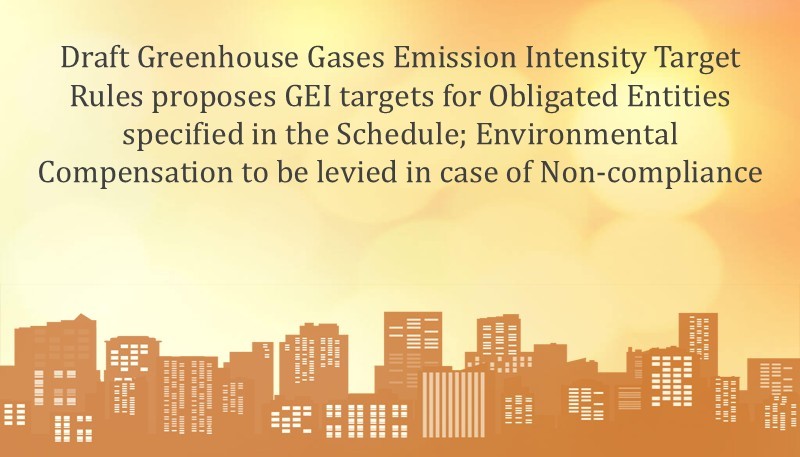Draft GEI Rules Introduce Emission Targets for Industries
Draft GEI Rules Introduce Emission Targets for Industries
Why in the News ?
The Environment Ministry has notified the Draft Greenhouse Gases Emissions Intensity (GEI) Target Rules, 2025, aimed at reducing emissions in energy-intensive industries. These targets support India’s Carbon Credit Trading Scheme and help fulfil its Paris Agreement commitments.
Key Provisions of the Draft GEI Rules:
- Draft GEI Rules, 2025 notified on April 16, set emission intensity targets for energy-intensive industries.
- Targets apply to 282 industrial units from sectors like aluminium, cement, pulp & paper, and chlor-alkali.
- Major firms like Vedanta, Hindalco, JSW Cement, and Grasim are covered.
- GEI is measured in CO₂ equivalent per unit of output.
- Targets are set for 2025–26 and 2026–27, with penalties for non-compliance.
Importance for India’s Climate Commitments
- Helps achieve India’s goal of reducing emissions intensity of GDP by 45% by 2030 (compared to 2005) under the Paris Agreement.
- Encourages adoption of green technologies and low-carbon processes in high-emission sectors.
- Builds on the older PAT Scheme (since 2012), but expands scope from energy to overall GHG emissions.
- Promotes sustainability through cleaner fuels, efficient machinery, and emission-reducing innovations.
Boost to India’s Carbon Credit Market
- The Rules operationalise the Carbon Credit Trading Scheme (CCTS), 2023.
- Industries meeting GEI targets earn tradable carbon credits.
- Non-compliant firms must buy credits or face Central Pollution Control Board penalties.
- Creates a market-based incentive for industries to cut emissions.
- Supports a regulated carbon market akin to systems in Europe and China.
Draft Greenhouse Gases Emissions Intensity (GEI) Target Rules, 2025 :● What it is: Mandates GHG emissions intensity reduction for energy-intensive industries. ● Released by: Ministry of Environment, Forest and Climate Change, Government of India. ● Objectives: ○ Cut emissions intensity in key sectors. ○ Support implementation of Carbon Credit Trading Scheme (CCTS), 2023. ○ Help achieve India’s Paris Agreement target (45% reduction by 2030 vs 2005). ● Features: ○ Baseline Year: 2023–24. ○ Targets: For 2025–26 and 2026–27. ○ Industries Covered: Aluminium, cement, pulp & paper, chlor-alkali. ○ Units Covered: 282 units across 4 sectors. ○ Mechanism: Carbon credit trading and penalties via CPCB. |




